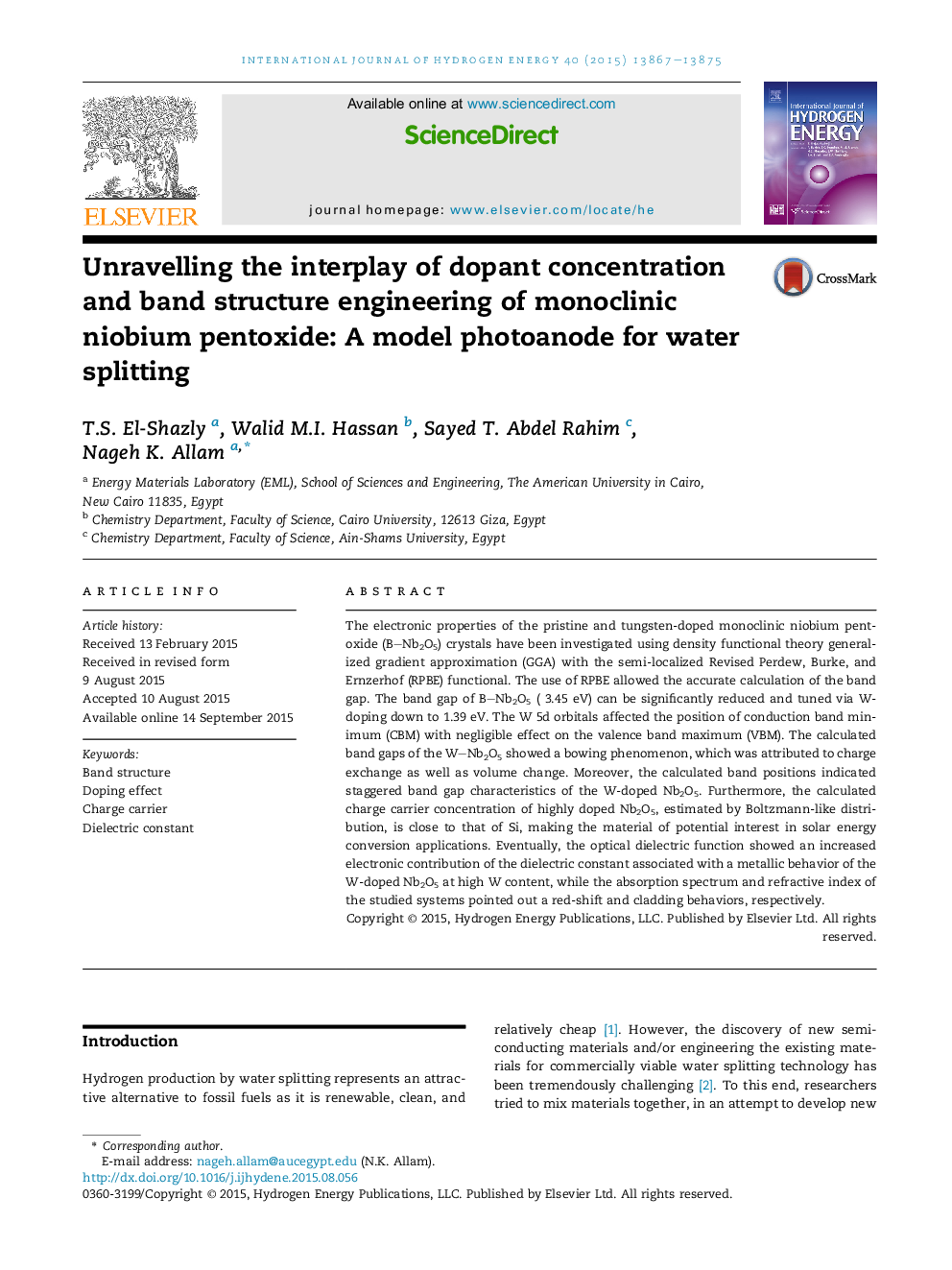| Article ID | Journal | Published Year | Pages | File Type |
|---|---|---|---|---|
| 1270444 | International Journal of Hydrogen Energy | 2015 | 9 Pages |
•The use of RPBE allowed the accurate calculation of the band gap.•W 5d orbitals affected the CBM position with negligible effect on the VBM of Nb2O5.•The calculated band gaps of the W-doped Nb2O5 showed a bowing phenomenon.•The charge carrier concentration of highly doped Nb2O5 is close to that of Si.•Addition of W dramatically reduces the band gap from 3.45 eV to 1.39 eV at 50% W.
The electronic properties of the pristine and tungsten-doped monoclinic niobium pentoxide (B–Nb2O5) crystals have been investigated using density functional theory generalized gradient approximation (GGA) with the semi-localized Revised Perdew, Burke, and Ernzerhof (RPBE) functional. The use of RPBE allowed the accurate calculation of the band gap. The band gap of B–Nb2O5 ( 3.45 eV) can be significantly reduced and tuned via W-doping down to 1.39 eV. The W 5d orbitals affected the position of conduction band minimum (CBM) with negligible effect on the valence band maximum (VBM). The calculated band gaps of the W–Nb2O5 showed a bowing phenomenon, which was attributed to charge exchange as well as volume change. Moreover, the calculated band positions indicated staggered band gap characteristics of the W-doped Nb2O5. Furthermore, the calculated charge carrier concentration of highly doped Nb2O5, estimated by Boltzmann-like distribution, is close to that of Si, making the material of potential interest in solar energy conversion applications. Eventually, the optical dielectric function showed an increased electronic contribution of the dielectric constant associated with a metallic behavior of the W-doped Nb2O5 at high W content, while the absorption spectrum and refractive index of the studied systems pointed out a red-shift and cladding behaviors, respectively.
Graphical abstractFigure optionsDownload full-size imageDownload as PowerPoint slide
